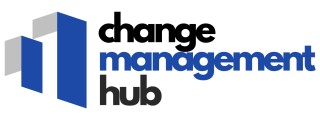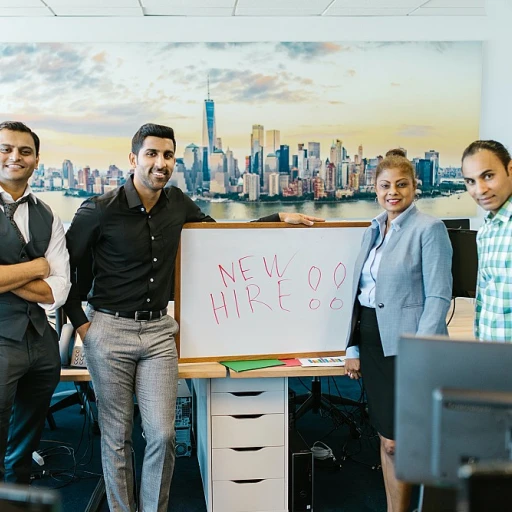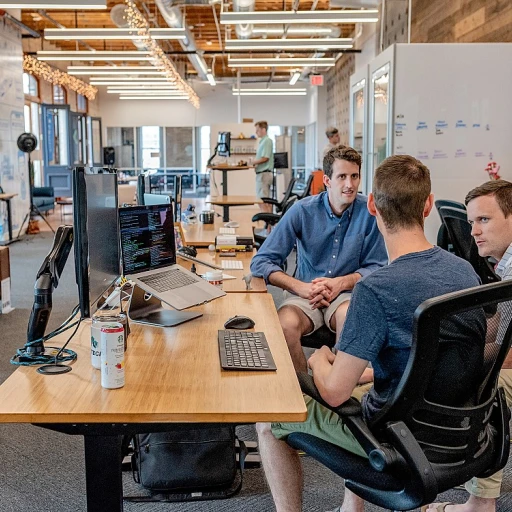-large-teaser.webp)
The Fundamentals of the ADKAR Model
Essential Concepts of the ADKAR Framework
The ADKAR Model stands as a cornerstone in the realm of change management, recognized for its structured approach to navigating organizational and individual change. Developed by Prosci, the ADKAR framework serves as a guide for leaders aiming to foster successful change within their organizations. The model centers around five crucial elements: Awareness, Desire, Knowledge, Ability, and Reinforcement—all pivotal in the journey of change.
Understanding these elements is vital for leaders and teams striving to adapt to change efficiently. The model emphasizes that change is both an organizational and individual effort. Recognizing this dual nature helps in addressing the unique challenges that arise during the change process.
The success of any change initiative largely depends on these critical components. By focusing on Awareness, organizations can ensure that employees understand the need for change. This understanding is the foundation that supports Desire and motivates individuals to participate willingly in the change process. Knowledge equips team members with the necessary information and skills, while Ability focuses on implementing these changes practically. Finally, Reinforcement ensures that changes are sustained over time, embedding new practices into the organizational culture.
Effective communication and training are integral to the ADKAR Model, offering support and ensuring that everyone involved is aligned with the change objectives. For an insightful exploration of the theoretical foundations supporting the ADKAR Model, you can visit this detailed analysis of change theories.
This model serves as more than just a checklist; it's a comprehensive management model that empowers organizations to navigate both simple and complex transformations, such as digital adoption. By leveraging the ADKAR framework, organizations can enhance their change management capabilities, fostering employee engagement and ensuring the success of their change initiatives.
Awareness: The First Step in Change
The Importance of Building Awareness for Change
Creating awareness is the initial step in fostering readiness for change within an organization. It sets the foundation for a successful change management process, as outlined in the ADKAR model, which has become a cornerstone for organizations pursuing effective transitions. This model underscores that without proper awareness, individuals and teams might resist change or fail to understand its necessity.
Change leaders and managers play a crucial role in cultivating awareness among employees. They must communicate the 'why' behind the change, linking it to the organization's goals and long-term success. This involves outlining how the change will positively affect not only the organization but also the employees themselves, such as improving patient care or enhancing digital adoption. Clear, consistent messaging can help mitigate fears and uncertainties, making team members feel supported throughout the transition.
Awareness is not a one-time event but a continuous effort. Leaders must ensure that all team members receive adequate information and updates about the changes ahead. Regular training sessions, workshops, and open forums can be effective tools for this purpose. Additionally, leveraging feedback from employees can provide insight into areas where further awareness is needed, sustaining engagement and commitment.
An understanding of the ADKAR model can empower organizations to navigate the complexities of change management by recognizing the critical role awareness plays. By laying this groundwork, organizations can seamlessly move forward to the next phases of the model-change process, ensuring employees are prepared to build desire and acquire the necessary knowledge and ability for successful change. Successful change management hinges on this structured approach, setting the stage for future phases in which desire and knowledge are built upon the awareness established early on.
Desire: Building Motivation for Change
Fostering Motivation for Transformational Momentum
Creating a desire among employees to embrace change is a pivotal step in the ADKAR model. This isn’t just about making the change appeal to them; it’s about building a genuine, deeply-rooted motivation for transformation that aligns with both organizational goals and personal aspirations.
To cultivate this desire, effective communication is key. Organizations must ensure that the messaging around change is clear, transparent, and aligned with the interests of team members. Engaging employees in open dialogues can significantly enhance their motivation by addressing any concerns they might have and helping them understand the benefits the change will bring to their roles and to the organization as a whole.
Support from leaders plays a crucial role. Leaders can inspire teams by demonstrating commitment to the change and modeling the behavior expected post-implementation. This helps bridge the gap between awareness and desire, creating a more cohesive and motivated workforce ready to tackle the subsequent phases of the ADKAR model.
Moreover, providing adequate support systems can reinforce this desire. Offering training and resources that enhance employees’ abilities to thrive in the new environment can further increase their engagement and motivation. Ensuring that they have the tools and knowledge to succeed means anticipating their needs and providing solutions that encourage them to embrace the change willingly.
As practitioners of change management, it’s important to recognize that fostering a desire for change isn’t just a one-time effort but part of a continuous process. Maintaining momentum requires recognizing and rewarding efforts, thus ensuring that employees maintain their interest and enthusiasm in the long term.
Knowledge: Equipping for Change
Gaining Knowledge: Laying the Foundation for Skill Development
In the realm of change management, equipping yourself and your team with the right knowledge is critical to facilitate any shift effectively. The ADKAR model places significant emphasis on this stage, as it sets the groundwork for the steps that follow. Without a solid understanding of the new processes, systems, or strategies, a team’s ability and desire to implement change can be significantly hindered.
For successful change, it's important that both leaders and employees have a clear understanding of what the change entails. This often requires comprehensive training sessions and workshops tailored to different learning styles. Encouraging open communication can also help address any gaps in understanding, allowing team members to feel more confident in their roles during the transition.
Organizations should also consider ways to support continuous learning. Whether through online resources, mentorship programs, or interactive training sessions, fostering a culture of knowledge-sharing can enhance overall employee engagement and ensure the long-term success of the change process.
- Training Programs: Organize sessions tailored to specific team needs and objectives.
- Access to Resources: Provide comprehensive materials and tools necessary for learning and development.
- Mentoring and Support: Encourage experienced team members to support and guide others.
- Continuous Feedback: Implement feedback mechanisms to identify areas of improvement in the training process.
Ultimately, this stage in the ADKAR model promotes not just individual change but also supports organizational change as a whole. By investing in the knowledge development of team members, organizations can cultivate a well-prepared workforce ready to face the challenges of modern change management, including digital adoption and other strategic transformations.
Ability: Implementing Change Successfully
Effective Implementation: Bridging Theory and Practice
With Awareness and Desire established, organizations can move forward in empowering their employees with the right Knowledge to support the coming change. But it is in this stage of Ability where theory and practice converge to make the change a reality. The challenges encountered here involve more than just understanding concepts; team members must internalize and apply these concepts in their daily tasks.
Effective change management requires equipping employees with the necessary skills and resources. Training programs, hands-on workshops, and direct support from leaders and skilled team members play a crucial role in this process. As employees collaborate, their collective expertise fuels an organization's transformation journey. Proactive communication from management leaders helps in guiding this process, ensuring clarity and steady progress.
The ADKAR model emphasizes that successful change hinges on the ability of individuals to adapt their workflows and embrace new methodologies. This does not merely involve technical training, but also fostering an environment that supports innovation and flexibility. Employees should feel encouraged to share feedback and seek help where needed, reflecting a culture of openness and continuous improvement.
The challenges of digital adoption, especially in sectors like healthcare, where patient care is paramount, underscore the need for seamless integration of new practices. Ensuring that employees not only understand but also fluently execute their roles in the new system is vital for long-term success. Hence, organizations should have ongoing assessment mechanisms to gauge ability and provide supplemental support where gaps are identified.
In summary, this Ability stage in the ADKAR model is a critical turning point. It requires a proactive, well-supported approach that enables employees and organizations to flourish through inevitable transitions. Ensuring sustained employee engagement and reinforcing their achievements will facilitate a smooth transition, optimizing overall change management outcomes.
Reinforcement: Sustaining Change Over Time
Ensuring Long-Term Success with Reinforcement
In the journey of change management, reinforcement is the crucial step that ensures the change is not just implemented but sustained over time. The ADKAR model highlights the importance of reinforcing change to prevent regression and to embed new practices into the organizational culture.
Reinforcement involves a strategic approach to maintain the momentum gained from previous steps like awareness, desire, knowledge, and ability. Here’s how organizations can effectively reinforce change:
- Continuous Communication: Keep the lines of communication open. Regular updates and feedback loops help in addressing any issues that arise and in celebrating successes, which boosts morale and commitment among team members.
- Recognition and Rewards: Acknowledging the efforts of employees and teams who have adapted to the change is vital. Recognition can be a powerful motivator and helps in reinforcing the desired behaviors.
- Ongoing Training and Support: Providing continuous training ensures that employees have the necessary skills and knowledge to maintain the change. Support systems, such as mentoring or coaching, can also help individuals who may struggle with the transition.
- Monitoring and Feedback: Regularly monitor the change process and gather feedback from employees. This helps in identifying areas that need improvement and ensures that the change is effectively integrated into daily operations.
- Leadership Involvement: Leaders play a crucial role in reinforcing change. Their commitment and support can inspire confidence and encourage employees to embrace the change fully.
By focusing on these elements, organizations can ensure that the change is not only implemented but also becomes a permanent part of the organizational fabric. The ADKAR model provides a structured approach to change management, emphasizing the importance of reinforcement in achieving long-term success.













